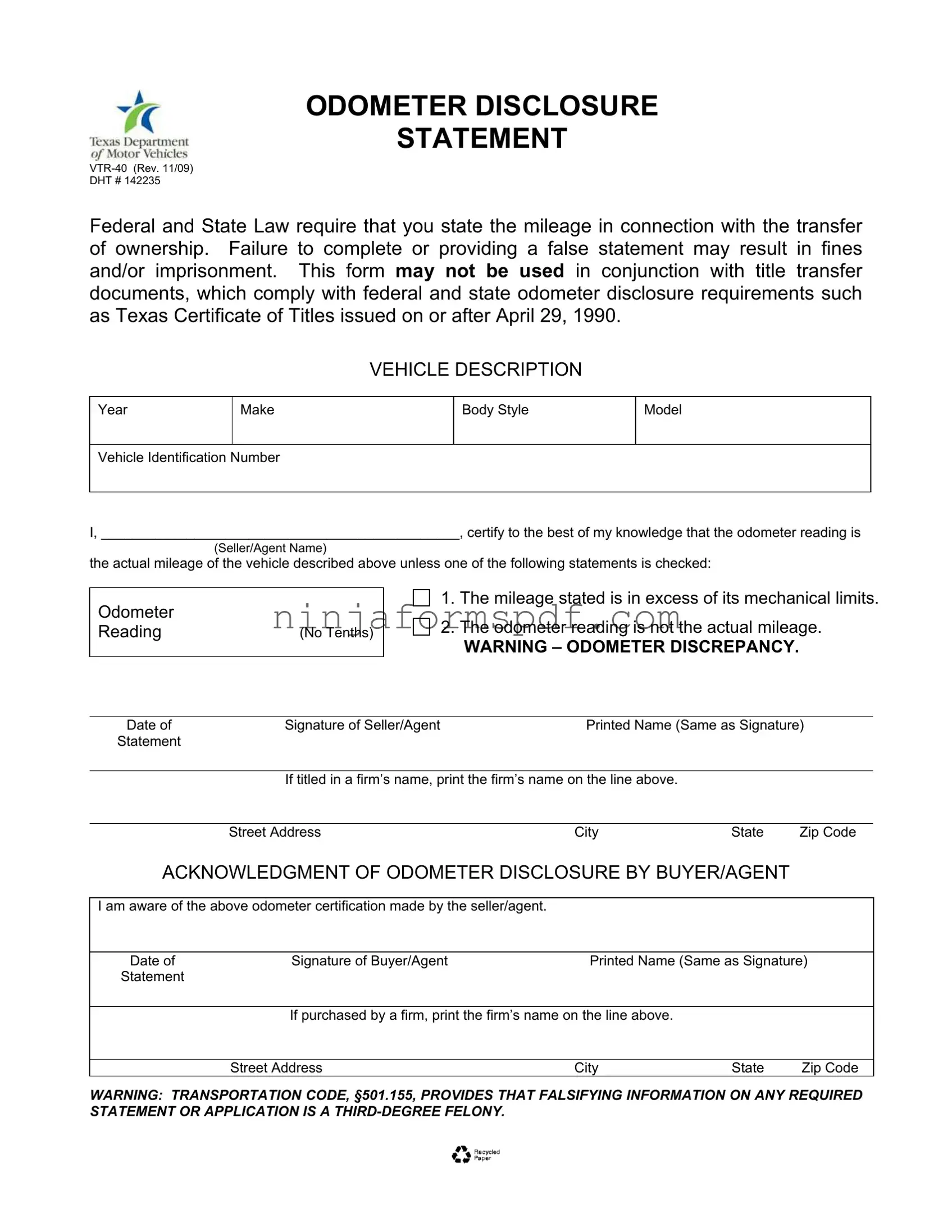The Federal Truth in Mileage Act (TIMA) disclosure requirements form operates in a similar manner to the Texas Odometer Statement form. Both documents serve the essential purpose of ensuring honesty and transparency regarding a vehicle's mileage at the time of sale. Each form mandates that the seller provide accurate odometer readings and disclose any known discrepancies. The primary aim is to protect consumers from fraud related to vehicle mileage, a critical factor in assessing a vehicle's value. While the Texas Odometer Statement is specific to Texas, TIMA's requirements affect transactions nationwide, underscoring the universal importance of truthful mileage disclosure in vehicle sales.
A Bill of Sale for a motor vehicle is another document bearing resemblance to the Texas Odometer Statement form. It often includes a section for the seller to indicate the vehicle's current mileage alongside the odometer disclosure statement, if it doesn't incorporate a separate odometer disclosure form. Both documents are integral to the process of transferring ownership of a vehicle, providing a record that encapsulates the details of the transaction, including the agreed-upon sale price and the vehicle's condition at the time of sale.
The Vehicle Title Transfer form, required when ownership of a vehicle changes hands, also shares similarities with the Texas Odometer Statement form. In many jurisdictions, this form includes an odometer disclosure section to comply with federal and state regulations. Both forms are critical in the vehicle sale process, officially documenting the vehicle's mileage and the transfer of ownership, thereby ensuring that all legal and procedural requirements are met.
A Lease Agreement for a vehicle might not seem directly related to the Texas Odometer Statement form at first glance, yet it also necessitates accurate mileage reporting. Just as the odometer statement records the mileage at the time of sale or transfer, a lease agreement includes terms regarding mileage limits and potential penalties for exceeding them. This connection underlines the importance of mileage in various aspects of vehicle documentation and management.
The Notice of Transfer and Release of Liability is a document typically submitted to a state's Department of Motor Vehicles (DMV) when a vehicle is sold or transferred and can include information similar to that found in the Texas Odometer Statement form. While its primary function is to release the seller from liability for anything that occurs after the sale, it often requires the seller to confirm the odometer reading at the time of sale, providing another layer of protection against odometer fraud.
The Vehicle Registration form, necessary for registering a vehicle with the relevant state authority, sometimes requires a current odometer reading, particularly for used vehicles. This requirement aligns with the objectives of the Texas Odometer Statement form by ensuring the state has a record of the vehicle's mileage. Such information can be critical for various administrative purposes, including taxation and adherence to environmental regulations.
Dealer Reassignment forms, used by dealerships when a vehicle changes hands among dealers before being sold to a consumer, often incorporate or are accompanied by odometer disclosure statements. Similar to the Texas Odometer Statement form, these disclosures are critical for maintaining a documented history of a vehicle's mileage, safeguarding against odometer tampering, and promoting transparency in the vehicle trade.
The Loan Agreement form for vehicles, while primarily financial in nature, occasionally requires an odometer reading to ascertain the vehicle's value accurately. The inclusion of mileage in this context mirrors the Texas Odometer Statement form’s emphasis on the pivotal role of accurate mileage in determining a vehicle's worth. This ensures that the loan amount is appropriate to the vehicle's value, thereby protecting the interests of both the lender and the borrower.

